Identify and Prevent Tomato Big Bud Disease | Gardener’s Path
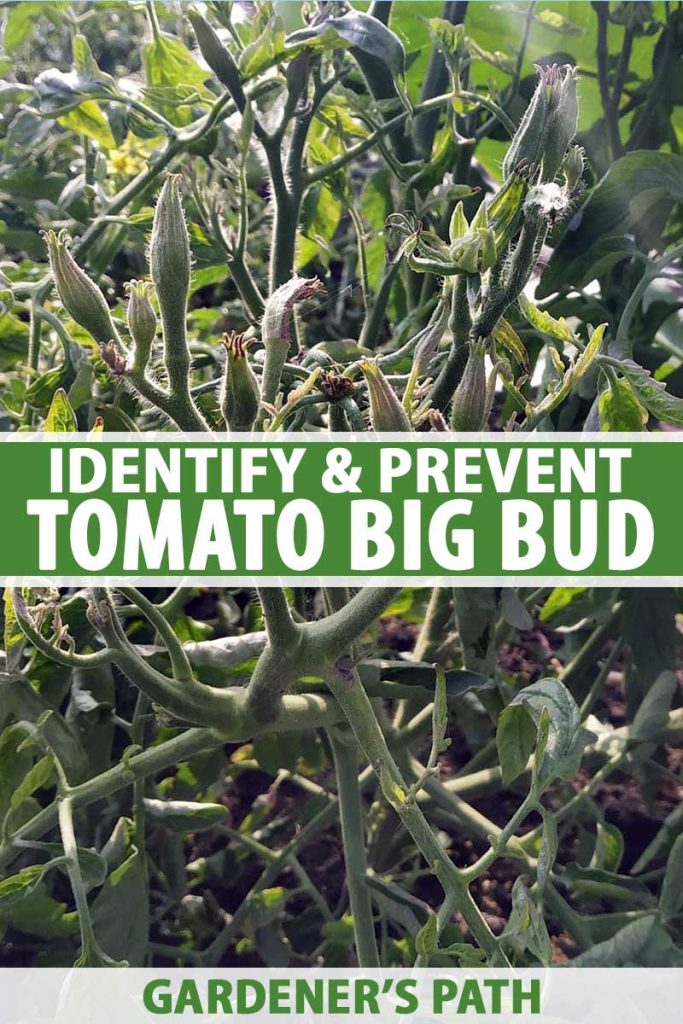
If your tomato plants have enormous bloom buds and little or no yield develops, you should examine them Thomas More tight to see if they have the aptly named tomato big bud disease.
Spell this disease can be a severe problem in subtropical areas of the world, it is less general in the US, and typically is a more venial concern for farmers and home gardeners here.
Withal, if your plants are infected, it tin can be a serious job.
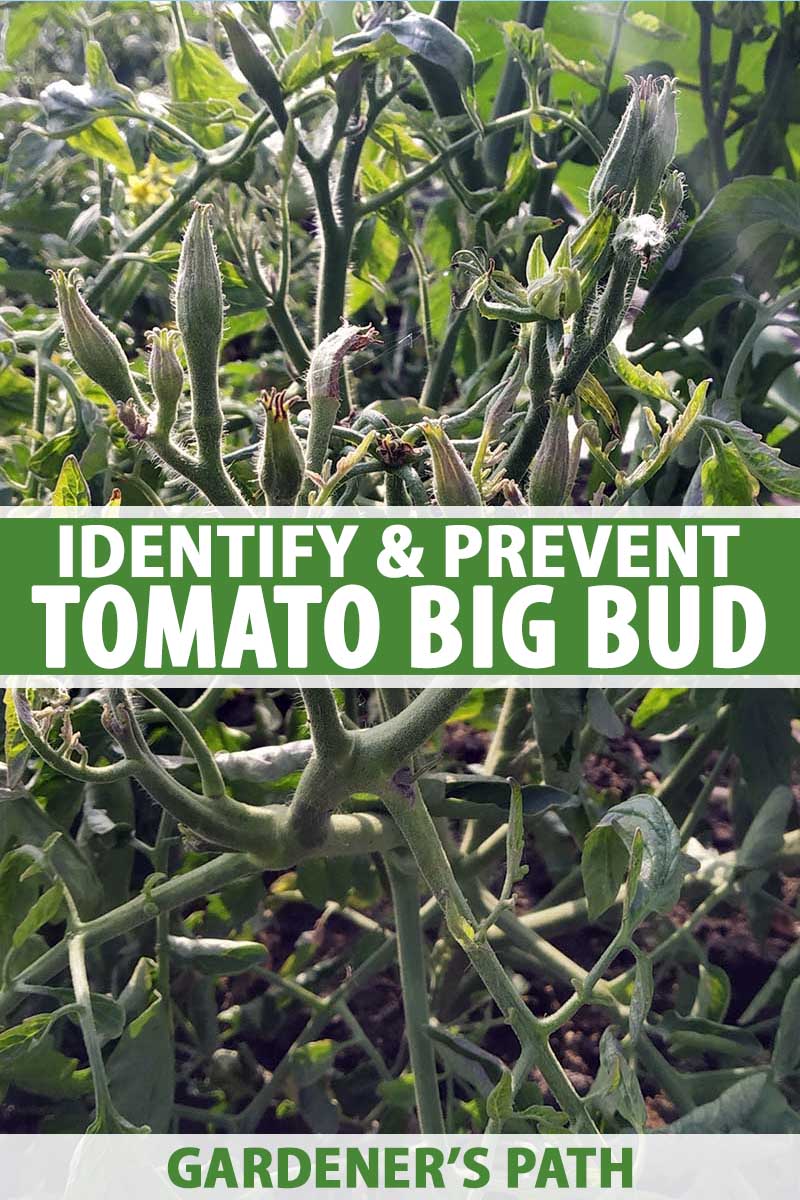
We link to vendors to help you find at issue products. If you buy from one of our links, we may earn a committee .
Read on to learn what to look for and what to do if your tomato plant plants have great bud disease.
Here's what I'll embrace:
What You'll Ascertain
- Scientific Gens and Distribution
- Symptoms
- Hosts
- Spread of the Disease
- Management
- Control Leafhopper Populations
- Cultural Controls
Scientific Name and Dispersion
As COVID-19 tells us, IT's amazing how more than damage tiny organisms can do.
In this case, the offending pathogen is known as a phytoplasma – a microscopic organism that is small than bacteria.
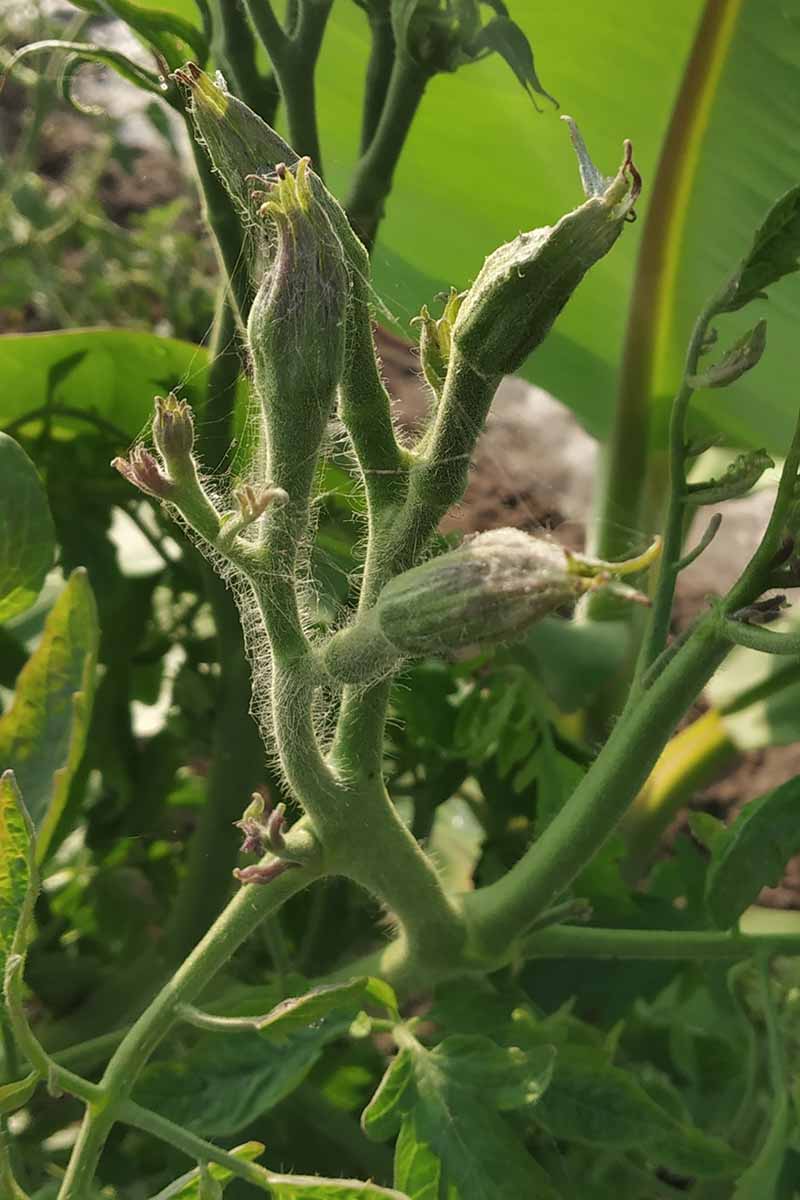
This same is known formally As Candidatus Phytoplasma aurantifolia, and more normally as love apple big bud (TBB).
Phytoplasmas were previously known As "mycoplasma-comparable organisms." They are parasitic in nature, and call for a plant or insect host in order to pull through.
These pathogens are trustworthy for a number of different diseases that affect hundreds of plant species, including tater empurpled top wilt.
Several strains of this organism survive, and the indefinite that plagues plants in the US is far-famed as 16SrII, based on molecular genetic analyses of its ribosomal Ribonucleic acid.
Tomato big bud was first identified in Australia in 1902, from whence it has spread to the US, Brazil, China, India, Pakistan, Republic of South Africa, and many of the Pacific Islands.
In 2015, a subgroup of 16SrII was found to impress crops in Tanzania, and as of 2019, it has also been identified in Syria where C. Phytoplasma trifolii was determined to exist the cause.
The disease is currently scattering throughout the tropics, and reports of infections in new locations are frequently publicized in the knowledge domain literature.
Thankfully, it's not common in the US, although outbreaks have been reported in Fresno County, California, and NY.
Symptoms
What's this disease all nearly? The nearly discernible symptom is the swollen flower buds with green, sealed sepals that sometimes develop shoots.
The leaves display symptoms, too. They turn chromatic-green operating theatre majestic and are curled upwards and small.
If any green fruit develop, they leave be tough, hard, woody, and malformed.
Plants that are infected early in the harden will develop many branches and side shoots, so they will look bushy.
If these symptoms sound at every last like aster yellows, good visit! The organism that causes this disease in tomatoes is a nestled relative of the one that causes that serious disease.
Hosts
Unfortunately, the pathogen that causes this disease is plant in a tremendous number of hosts, including many cultivated plants and widow's weeds.
Crops that arse be infected with this particular strain let in eggplant, sweet potatoes,peppers, Chinese cabbage, and peanuts.
Ornamentals in the Celosia , Polygala, and Rattlebox genera crapper also be infected.
Plants from the nightshade kinsperson frequently harbor TBB. Weeds that can serve as hosts include lamb's-quarter, dockage, and sow in thistle.
Diffuse of the Disease
Were it not for leafhoppers, this disease would not bedspread far. Along its own, TBB typically remains unconnected in the pestiferous plants.
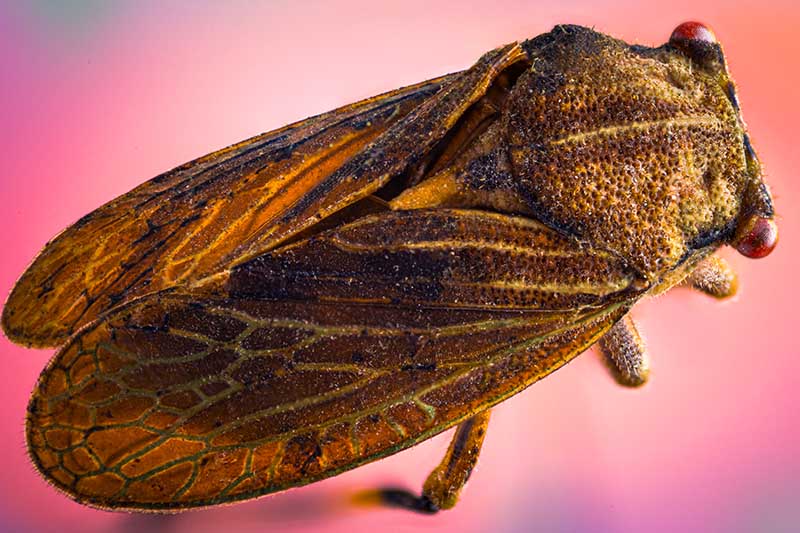
Leafhoppers tin can cause severe economic damage by transmission diseases, with Pierce's disease of grapes organism a prime example.
In the case of TBB, the uncontroversial-looking Brown leafhopper (Orosius argentatus) is the primary culprit, although the beet leafhopper (Circulifer tenellus) is the vector of disease in California.
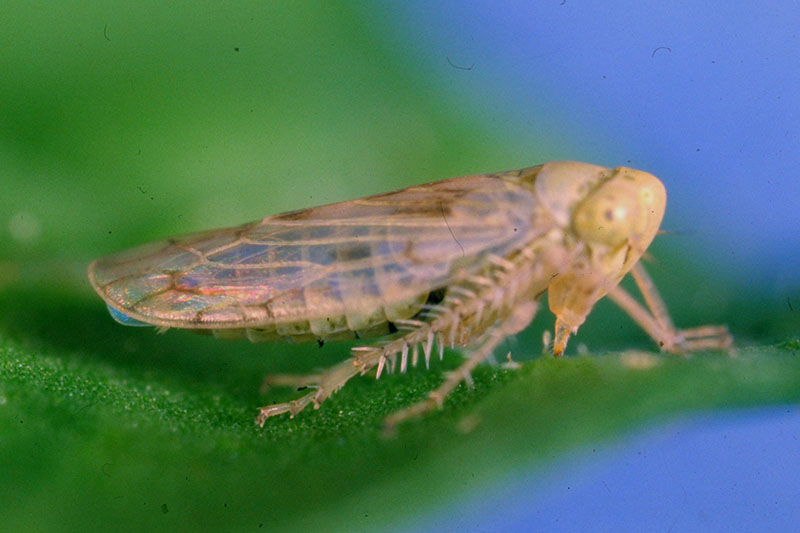
Thither May be other types of leafhoppers that bottom transmit TBB also.
These leafhoppers are major travelers and can move over long distances. That is wherefore New York State tail have outbreaks of tomato plant big bud, according to Tom Zitter of Cornell University.
Management
Piece there is nobelium surefire way to avoid this disease, there are whatever steps that you terminate take.
And the first one is to dispatch the infected plants and destroy them!
Control Leafhopper Populations
Purging leafhoppers seems like the obvious affair to do, right?
However, whether this is executable depends on where you live.
If you live in a temperate surface area equivalent New York State, treating the leafhoppers with insecticide may provide some control.
However, experts advise against even trying to control the leafhoppers if you sleep in a warmer area like the Southwesterly.
The pests will fly in and infect your plants before the insect powder affects them.
Fast-acting insecticides such as pyrethrins operating theatre azadirachtin can be effective against adult leafhoppers.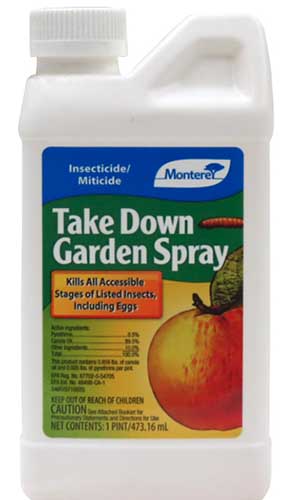
Let down Garden Spray
You can find a Get down Garden Nebulise, a pyrethrin-based insecticide, available at Arbico Organics.
You should also encourage beneficial insects to come into your garden, or you might take buying assassin bugs, unripe lacewings, Beaver State ladybugs.
These predatory insects will consume the eggs, nymphs, and full-grown leafhoppers, and help to hold up their populations down.
A assortment of disparate vulturine insects are available to purchase at Arbico Organics.
Cultural Controls
Scout your garden before you plant your tomatoes. Remove whatever volunteer tomato plants that may have popped up in your compost pile.
Pull whatever widow's weeds, focalization particularly on removing any in the nightshade family.
Raise your seedlings low-level a mobile row cover.
Avoid planting next to past crops like eggplant that can be infected.
At the end of the season, collect your tomato plants and either bury or burn them.
Large Tomato Buds Give notice Be Problematic
Excessively large green buds connected your plants can point that they are infected with tomato important bud.
This disease is spread by shared insects known as leafhoppers, and there is non much you can fare if your plants are infected.
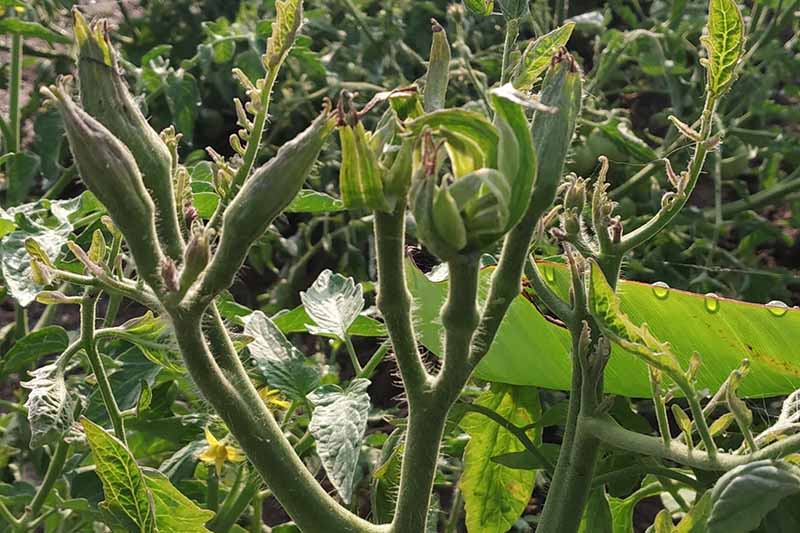
Prevention is the Best bet – particularly by ridding your garden of nightshade weeds that tail serve as hosts.
Fortunately, this disease is uncommon in the US. It is primarily a subtropical problem.
However, keep your eyes naked as a jaybird for strange looking plants, and strike fulfill if you see them!
To learn many around unrefined tomato diseases, check out the following guides incoming:
- Describe and Kickshaw Septoria Leaf Post
- How to Identify and Forestall Catfacing of Tomatoes
- How to Prevent and Treat Archeozoic Plague of Tomatoes
- Blossom-End Rot: What to Do if Your Tomatoes Hogwas on the Bottom
© Deman the Experts, LLC. ALL RIGHTS RESERVED. See our TOS for more details. Product photos via Arbico Organics. Uncredited photos: Shutterstock With additional piece of writing and editing by Clare Groom and Allison Sidhu.
https://gardenerspath.com/how-to/disease-and-pests/tomato-big-bud/
Source: https://gardenerspath.com/how-to/disease-and-pests/tomato-big-bud/

0 Response to "Identify and Prevent Tomato Big Bud Disease | Gardener’s Path"
Post a Comment